How Jamon is made
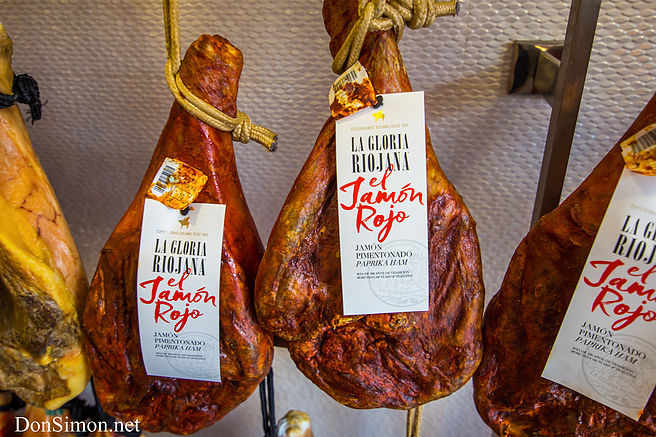
The image of every country is associated with a number of stereotypes and myths judging by which one can easily recognize it. For example, everyone can easily say what country it is by the following chains of well-known images: bear – vodka – balalaika; beer – sausages – salty cabbage; bullfight – football – jamon. So, today we speak about Spain and its national colorful symbol – Jamon.
Historically it is considered that the production of jamon on the Iberian Peninsula was started in ancient times as the only possible way to preserve pork meat in hot climate without any additional freezing equipment. Also it seemed quite reasonable taking into account months-long sea voyages of Spanish people, those times lords of the sea.
In some regions of Spain where the climate is mountain, winter temperatures and natural humidity coincide with the temperatures necessary for salting, drying and curing of pork – in those regions it was so normal to produce the product most tasteful, rich in vitamins and minerals, compact in size and easy in use. We managed to visit a factory which produces Jamon and sausages in La Rioja region, Baños de Río Tobía town.
The factory Martínez Somalo was established in 1900 and is still a family business, governed by the fourth generation of manufacturers.
Interestingly there are 5 large productions of sausages and jamon in a small town with a population of 2000 people. In fact, the location of factories is ideal between two mountains where the climate is suitable for the process of meat maturation.
A list of Martínez Somalo factory products:
CHORIZO SARTA EXTRA
CHORIZO SARTA 100% NATURAL DULCE Y PICANTE
LA GLORIA RIOJANA
CHORIZO SARTA IGP RIOJANO
CHORIZO EXTRA GRAN VELA
CHORIZO BARBACOA DULCE Y PICANTE
CHORIZO SEMICULAR 100% NATURAL
SALCHICHÓN SARTA
SALCHICHÓN SEMICULAR
LOMO EMBUCHADO EXTRA DUROC
JAMÓN SERRANO
JAMÓN PIMENTONADO
CHORIZO SARTA IGP RIOJANO
CHORIZO CON VINO 110
Unfortunately or probably vice versa fortunately, we were not allowed to make photos of the process of butchering and the work with raw materials. However, they explained step by step the details and answered all questions.
The factory is situated in an old six-floor building. First floors are given to production processes and the upper ones are equipped by modern cameras for salting and drying. Also outside the town another building complex is located. It serves as storage for the final stage of jamon maturation and as a place where the ready products are packed for further transportation.
Sausages
Traditionally in Spain the main spice added to sausages is red pepper of various types. According to the food technologist’s words, pepper is a perfect natural preservative and antioxidant.
Surely, being an experienced sausage-maker myself, I could not but ask about all the secrets of using nitrites, flavor intensifiers and other chemical additives. It’s always easy to check, by the way, what ingredients are used. The EU laws demand mentioning all additives on the label.
The food technologist was happy to reveal secrets. All the recipes were based on the following:
Meat, red pepper (various), garlic and salt. There is a sort of sausage which contains 9% of red wine, for example. And for salting jamon it is obligatory to use a certain amount of nitrite of soda.
When sausages are stuffed they are placed in camera for further drying under the temperature from +3 to +17 and the humidity from 80 to 63%. The more the product is dried the less humidity you adjust and the more temperature you raise. When 28-35% of total weight is lost, sausage is ready and can be delivered to customers.
Jamon
Nowadays every production step is made automatically. It’s funny to follow how large pork legs pass through conveyor line, dropping into a big barrel in which they mix well with nitrite salt. Later each leg is weighed, marked and put in a special box over other pork legs. Each row is sprinkled with a good deal of salt. Then the boxes are taken to camera where the temperature is +2C and the legs are to pass through salting process according to classical formula: 1kg – 24 hours.
The next step is to wash the legs of salt and send them to camera to balance salt and to dry, under +4 +11C for 5-6 months. After that comes the time of meat maturation and fermentation under +14 +20C duration 6-12 months.
When jamon lost necessary amount of weight, it is examined (each leg) and coated with thick layer of fat to stop the process of drying. And finally the legs are kept in cameras under +20C ready to meet customers.
The factory Martínez Somalo is specialized only in producing Jamon Serrano. It also disposes its own version of Jamon Rojo, which is coated with red pepper (coated after salting process is over) and it gives a unique bright and rich flavors. This Jamon Rojo is considered to be a local Rioja yummy. We liked it so much as well as other products of the factory. A special note goes to the sausage with wine (inside), of course, it’s beyond any compliments!


 Русский
Русский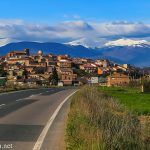
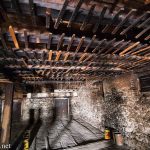
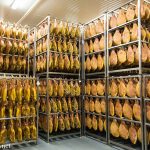
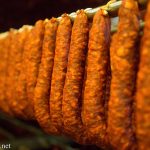
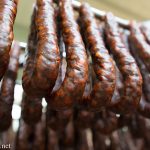
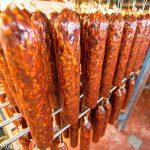
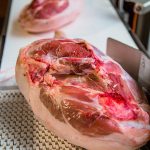
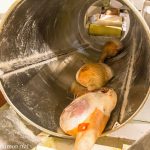
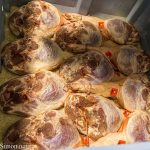

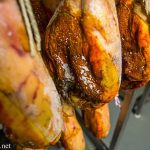
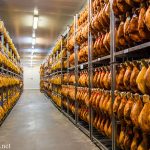
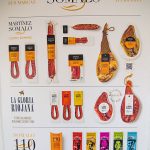

One comment
Or use one of these social networks